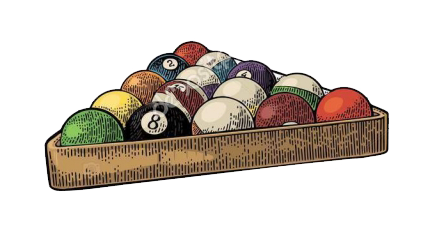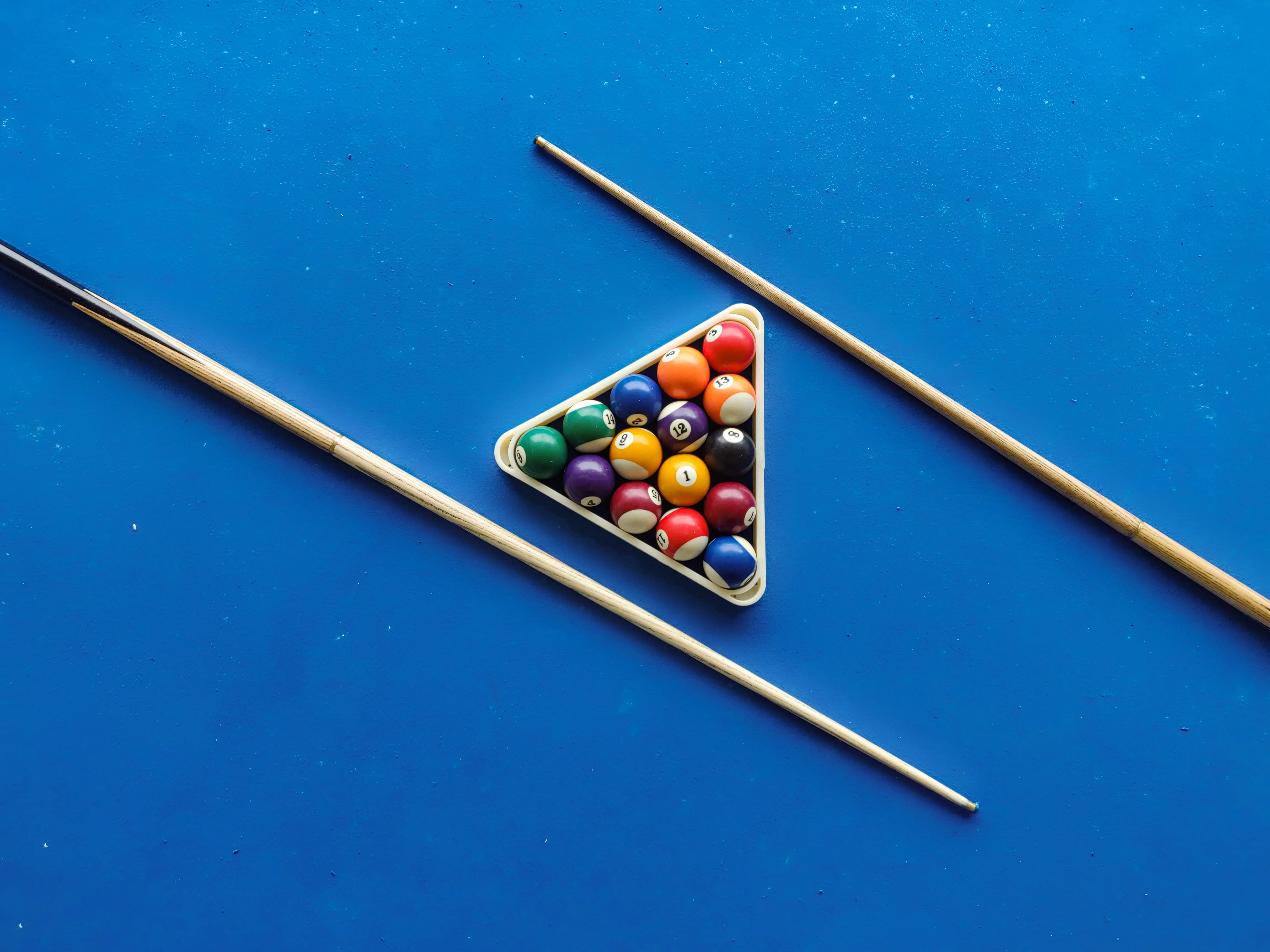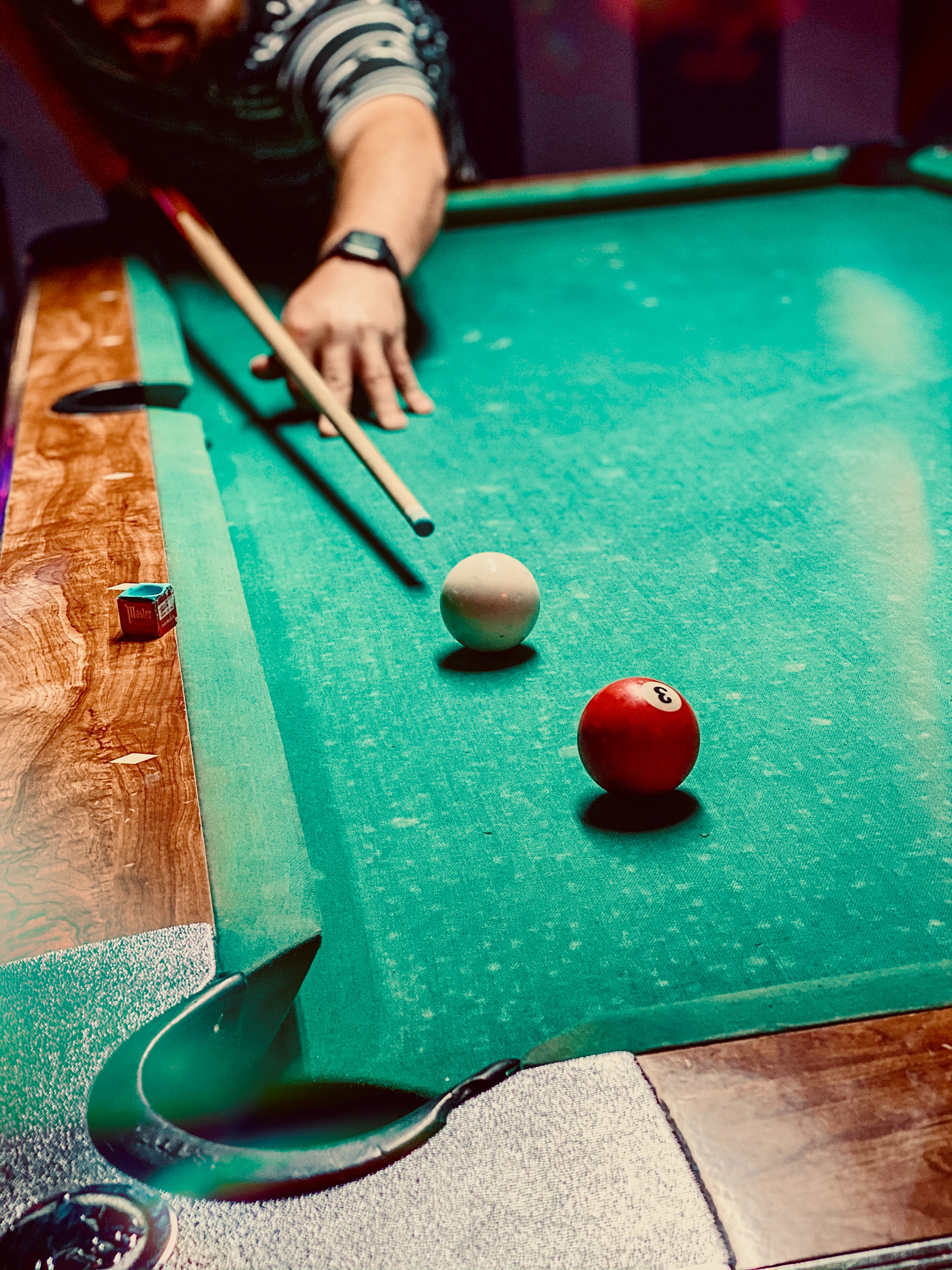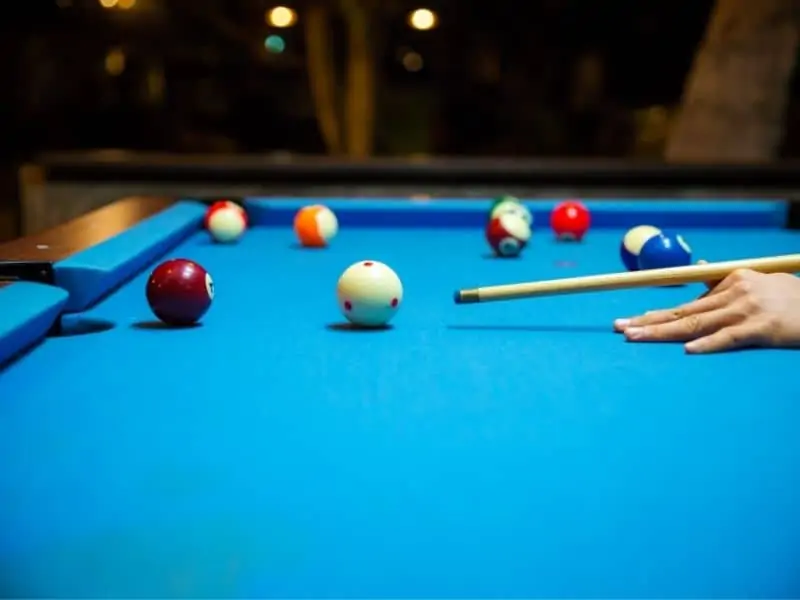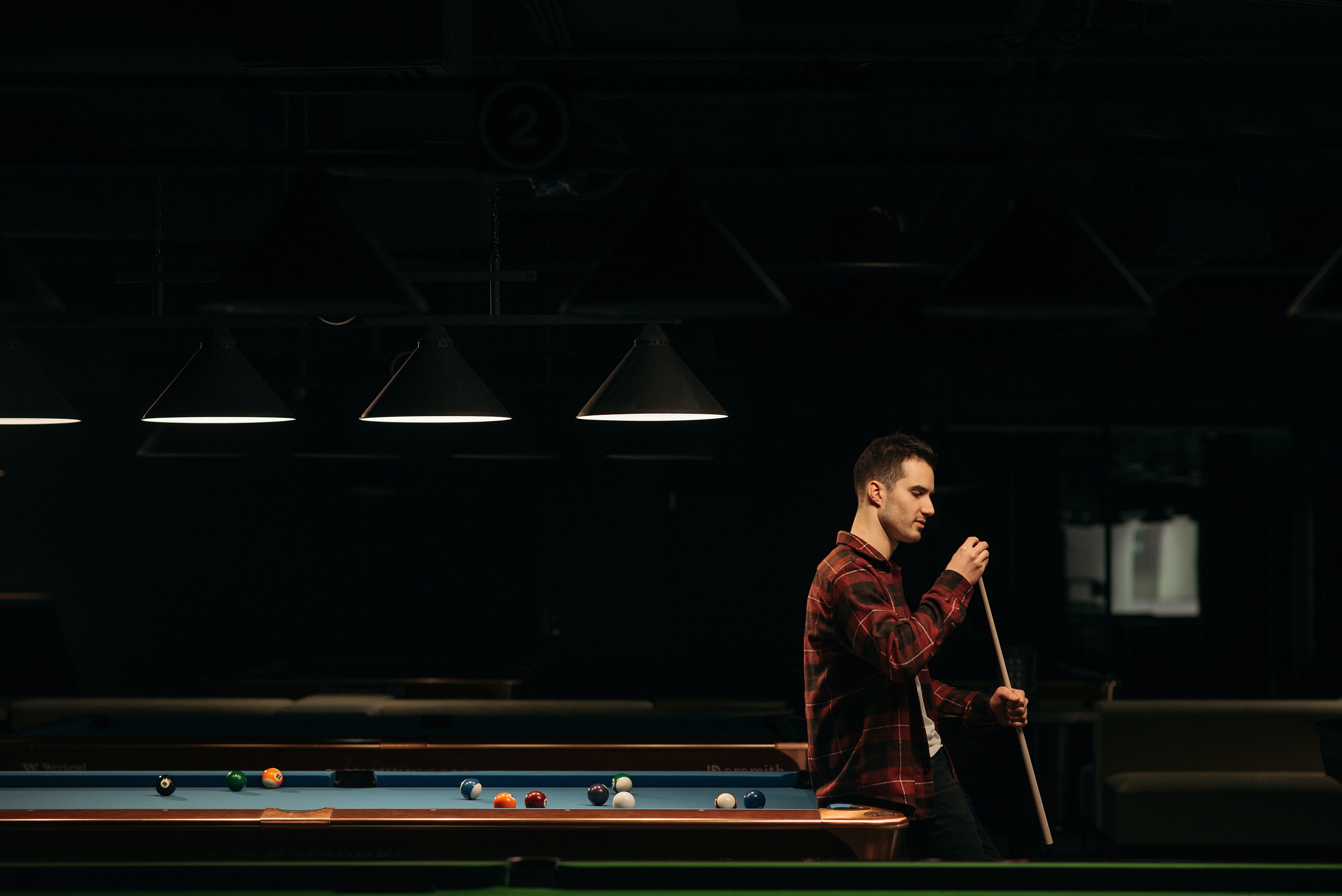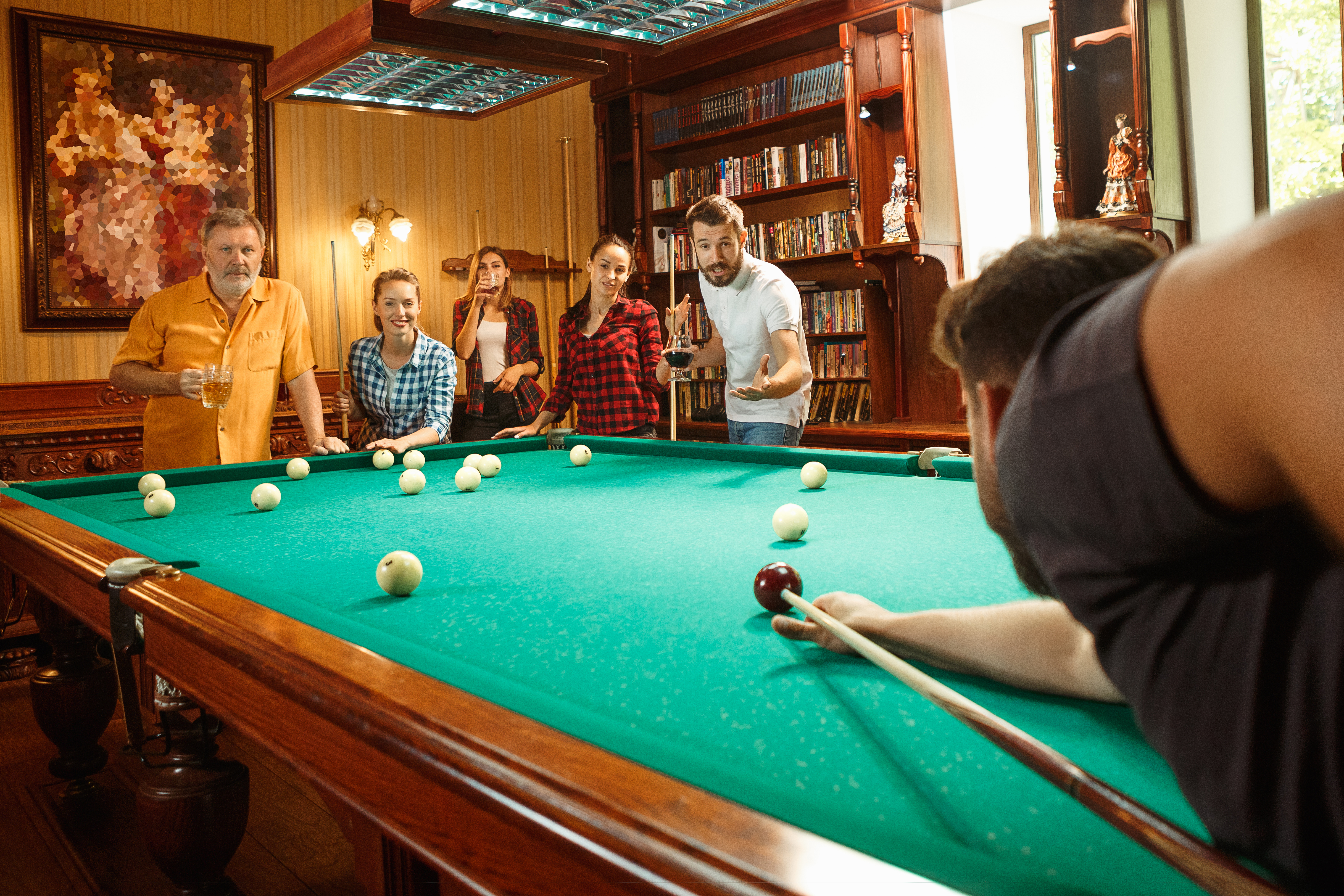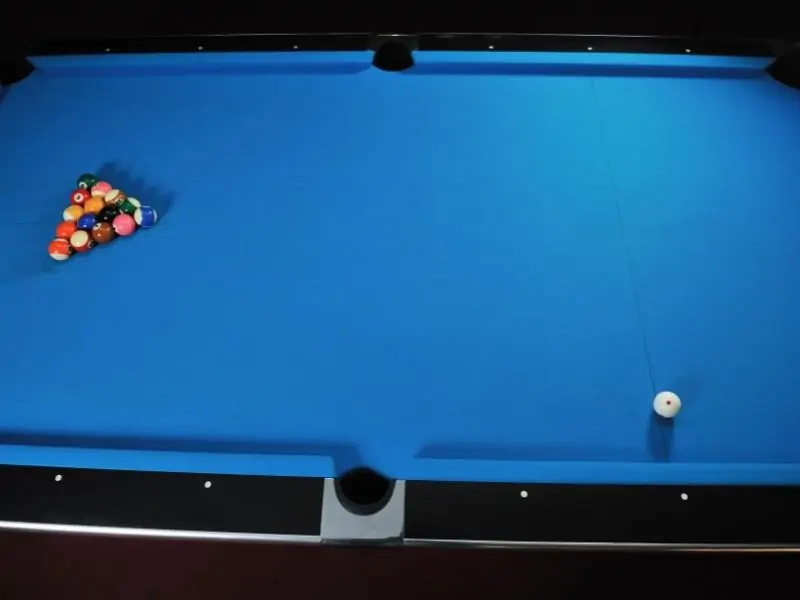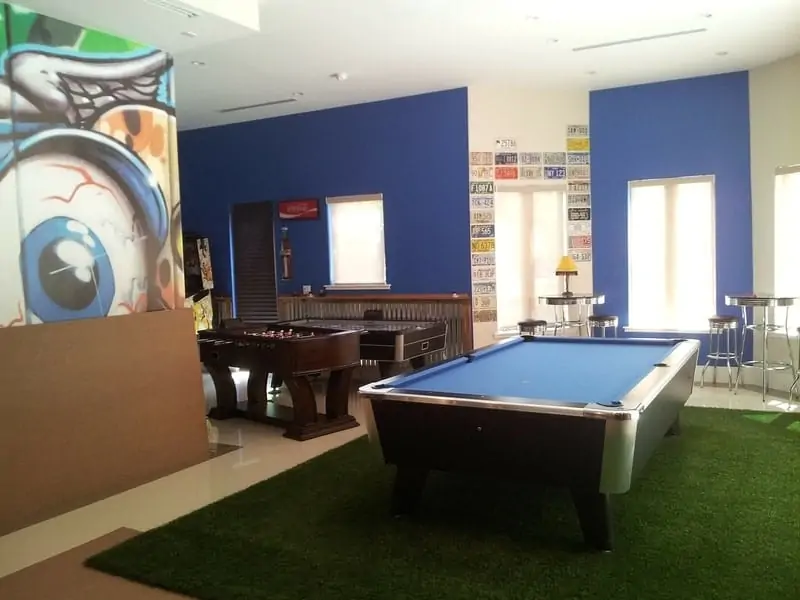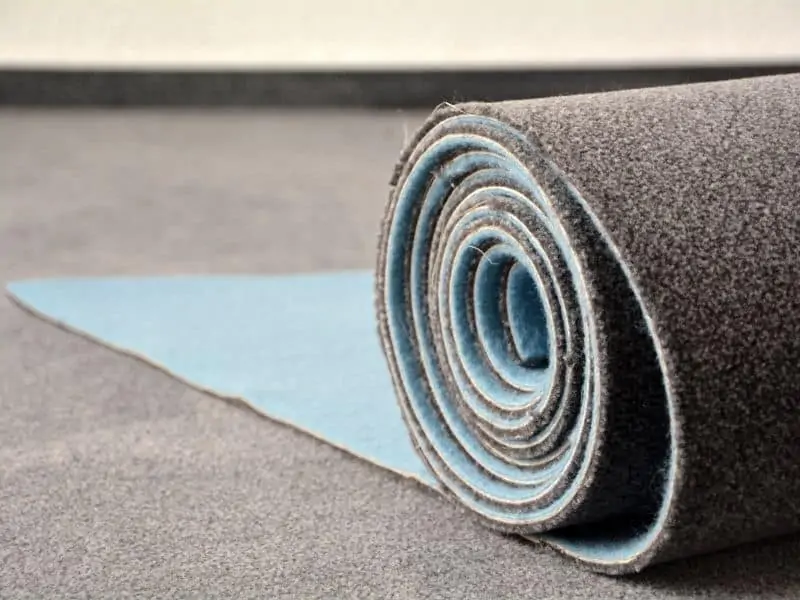For the majority of casual pool players, using the house cue is the way to go. After all, its free to use and it gets the job done. Using a different cue for breaking and playing is just overkill, right? Well that depends. Casual players can get away with using the house cue for breaking and playing. However, more advanced players usually opt to use a break cue for breaking, and a separate cue for playing.
What’s the Difference Between a Break Cue and Playing Cue?
Now if you’re still fairly new to the game of pool, you may be asking yourself, “What’s the difference between a break cue and a playing cue?” The main difference between a break cue and a playing cue is the way its constructed— Break cues have thicker shafts, shorter ferrules, and hard phenolic tips to be able to withstand the far greater force being applied to them during the break. Often this combination of attributes also results in a heavier overall weight as compared to cues designed solely for non-break play, which helps you maintain a greater degree of control without sacrificing power.
If you’d like to know more about the differences between break cues and playing cues, keep reading to learn more. In this article we’re going to share with you everything you need to know about the differences between break and playing cues so you can decide for yourself if you need to add another cue to the case!
How They’re Constructed

All pool cues have the same basic anatomy: butt, shaft, tip. However, what these parts are made of and how they’re constructed can have a huge impact on the way they play and what they can be used for. Lets take a closer look at the differences between the components of a break cue vs those of a playing cue.
The Butt
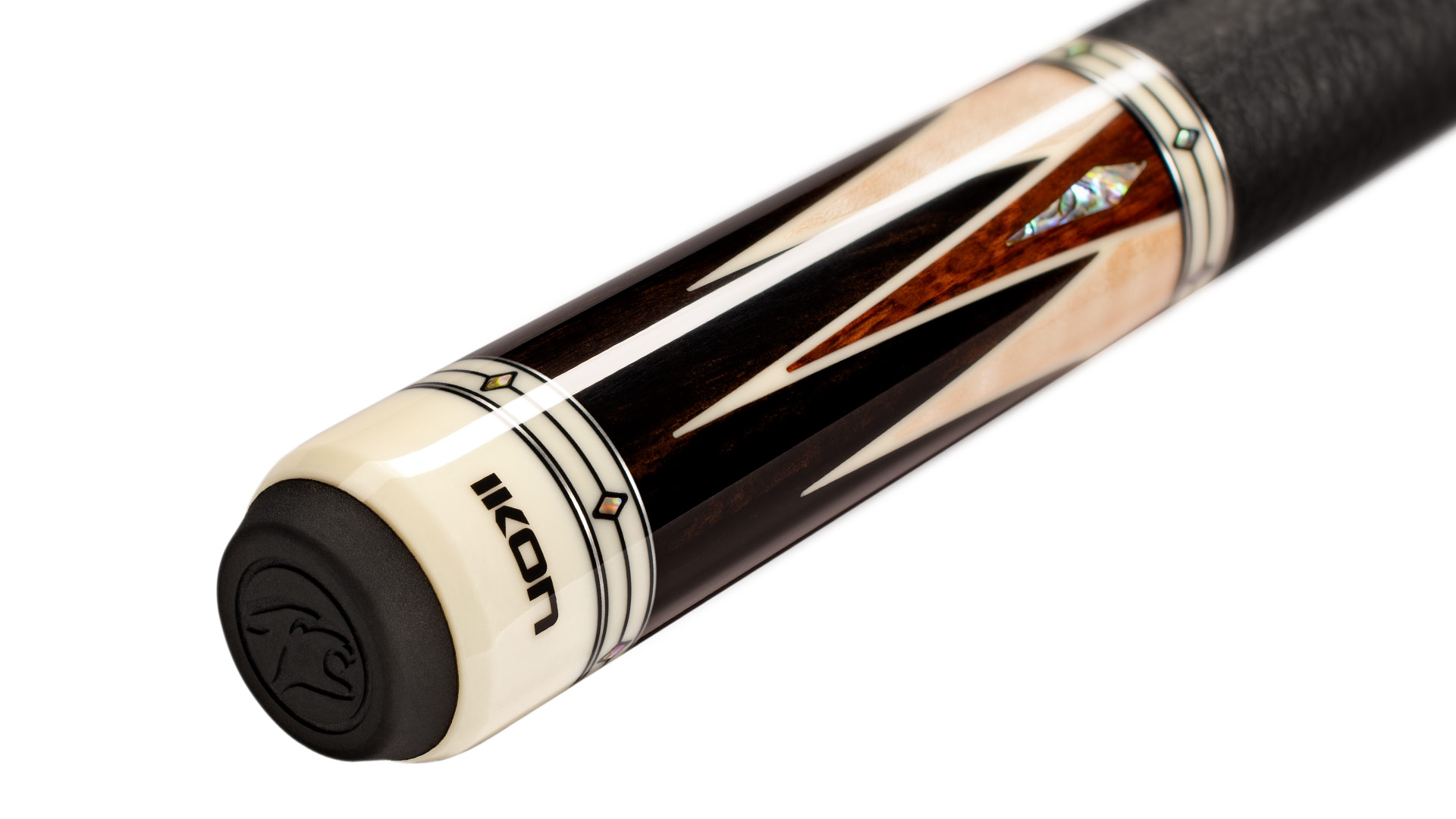
The butt end of the pool cue is the heavy end that typically has some form of wrap on it. Wrap materials can be anything from leather, to Irish Linen, to rubber. Some butts even come with no wrap at all. The type of wrap your butt has on it can drastically change the way your cue handles.For example, a rubber or leather wrap tends to be “grippier”, allowing you to put more power behind your stroke.
This is perfect for breaking. On the other hand, playing cues typically come with Irish Linen, which is better suited for finesse shots. This subtle difference in wraps is one key difference between a break and playing cue.The butt is also where the majority of the weight is. Break cues are often heavier than playing cues. This added weight helps put some extra force behind your shot which helps make breaking a bit easier. We’ll talk more about weight a little bit later.
The Shaft
The shaft of a break cue is also different to that of a playing cue. Because the break requires such an extreme amount of force to be effective, the shaft of a break cue needs to be able to withstand it. With that being said, break cue shafts are often thicker than playing cue shafts.
This is necessary to help prevent damage to the shaft that could occur from using such force. While ordinary shafts aren’t meant to tolerate this kind of use, break cue shafts are designed specifically to be used in this fashion.
The Tip

Most playing cues come equipped with either a soft or medium leather tip. These tips are perfect for holding chalk and maintaining control of the cue ball. Soft tips are usually popular with players who like to utilize a lot of English. This is because soft tips allow for better cue ball control and chalk retention. The downfall to these types of tips is that they wear out quickly when used for breaking.
That’s why break cues come stock with either hard leather tips or phenolic tips. These tips are designed to be used for breaking without wearing down quickly or mushrooming. They are also more conducive to speed rather than spin, which is helpful when it comes to break shots. Click here to learn more about soft vs hard cue tips.
Hard leather and phenolic tips are also maintenance free and can last for years. However, they don’t hold chalk well and therefore shouldn’t be used for anything other than breaking. Having a hard leather or phenolic tip on your break cue is crucial for a good solid break. Never replace your break cue tip with anything other than another hard leather or phenolic tip. Doing so defeats the purpose of having a designated break cue.
The size of your cue tip is another consideration, click here to learn what the pros use.
The Ferrule
The ferrule of the pool cue is the small, typically white, piece that sits between the tip and the shaft. It plays a vital role in helping disperse energy from the tip of your cue throughout the shaft and butt. It basically acts as a shock absorber and helps protect your cue.
If you take a look at most playing cues, the ferrules are usually around 1″ or so long. This length ferrule works perfect for playing cues but not so much for break cues. Because of the force used during break shots, ferrules on break cues are often much shorter.
Its not uncommon to see ferrules around 1/2″ or shorter.The material used for the ferrule is often different between break and playing cues as well. Playing cue ferrules are often constructed out of composite or linen material while most break cue ferrules are made of very hard, and durable phenolic or carbon fiber. The short, dense ferrule is perfect for absorbing impact without getting damaged in the process.
What About Weight Differences?
If you’re familiar at all with pool cues, you probably already know that the sweet spot for playing cue weight is between 19oz-21oz. This weight range seems to be perfect for most players. To find what works best and feels best for you will take some trial and error and a little bit of time.
The Debate: Heavy vs. Light Break Cues
There’s ongoing debate about the optimal weight for break cues. Here’s a closer look at both sides:
Heavy Break Cues (27oz): Power Without Speed
Some players prefer heavy break cues. These are better suited for those who wish to maintain the speed of their stroke and let the cue do the work. The extra mass of a heavy break cue allows more impact on the cue ball without increasing stroke speed.
Light Break Cues (20oz): Speed with Accuracy
Others favor light break cues. These are ideal for players who can increase their stroke’s speed without losing accuracy or control.
Whether you opt for a heavy or light break cue, it truly comes down to personal preference and what feels right for you. Both methods are effective for breaking, and the best choice will align with your unique playing style and comfort. Experiment with different weights to find the best fit for your game.
What Are The Benefits of Using a Designated Break and Playing Cue?
As you’ve discovered, there are subtle yet significant differences between playing and break cues. These differences can greatly influence your game. If you’re committed to honing your skills, you should seriously consider using designated break and playing cues. Here’s why:
Benefit 1: Consistency in Your Game
One compelling reason to use a designated break and playing cue is consistency. Practicing consistently with the same cue is vital to advancing your game. If you use the house cue for breaking, the uncertainty can affect your confidence. Regular practice with the same cue fosters trust in your equipment, enhancing your overall performance.
Benefit 2: Less Maintenance, More Savings
Another advantage of utilizing a designated break and playing cue is reduced maintenance. Although some players use their own playing cue for breaking, it’s not advisable. Using your playing cue for breaking subjects it to excessive force, causing faster tip wear and potential ferrule damage. By differentiating between a break cue for breaking and a playing cue for playing, you’ll save time and money on unnecessary repairs.
Benefit 3: Skill Enhancement through Proper Tools
Lastly, using the correct cue for the corresponding shot can elevate your playing abilities. Break cues and playing cues are crafted explicitly for specific shots. Employing them for their intended purpose improves your chances of enhancing your break and sinking more shots.
The benefits of using separate break and playing cues are clear. From fostering consistency to minimizing maintenance and sharpening your skills, the choice to invest in the right equipment can be a game-changer. Make the decision to invest in designated cues, and watch your game ascend to new levels.
How to Choose the Right Break and Playing Cues for Your Game
When diving into the world of pool and billiards, the selection of cues can seem overwhelming. With an array of materials, weights, and tip options available, choosing the right break and playing cues for your game is paramount. Whether you are a casual player or aspiring to become a professional, your cues can make a significant impact on your performance. In this section, we will guide you on how to select the perfect break and playing cues that align with your playstyle and goals.
Understand Your Play style
First and foremost, it’s important to understand your own play style. Are you an aggressive player, opting for powerful shots, or do you lean towards precise and controlled play?
Recognizing your style will help you in selecting cues that complement and enhance your game. For instance, players valuing control might opt for a lighter playing cue with a soft tip, while power players might prefer a heavier break cue to maximize impact on the break.
Assess the Materials
As highlighted earlier in the article, the materials of the cue, specifically the wrap on the butt, the tip, and the ferrule, can significantly affect your play. Do you need the grippy feel of a rubber or leather wrap, or do you prefer the smooth finesse offered by Irish Linen?
Test different materials and observe how they feel in your hands and impact your shots.
Consider the Weight
The weight of your cue is another essential aspect to consider. For many players, a playing cue that weighs between 19oz-21oz is ideal. However, the weight of your break cue might vary based on your breaking style.
As previously discussed, some players prefer a heavy break cue (27oz), while others opt for a lighter one (20oz). Experiment with different weights during actual gameplay, not just by feel in the shop, to see what suits your stroke best.
Maintenance and Durability
It’s also important to think about the longevity and maintenance requirements of your cues. For instance, phenolic and hard leather tips, common on break cues, generally require less maintenance than softer tips found on playing cues. Assess how much time and effort you are willing to dedicate to cue maintenance and choose accordingly.
Budget and Investment
Finally, consider your budget. Pool cues range significantly in price, from economical options to high-end professional cues. Determine how much you are willing to invest in your game. For serious players, spending a bit more on a quality cue can be a valuable long-term investment, whereas casual players might opt for something more affordable.
Click here to find the best pool cues for every budget.
So, What Did We Learn Here?

All in all, the differences between break and playing cues are subtle but important. Although most new players may not find it beneficial to have a designated break and playing cue, its crucial to those who play on a professional level and to those who want to improve their game.
If you’re ready to take your game up a notch, consider using a designated break and playing cue. Doing so will drastically improve your break and, by extension, your entire game.
Selecting the right break and playing cues is an important decision for any aspiring pool player. By understanding your play style, assessing the materials and weight, considering maintenance and durability, and setting a budget, you can make a well-informed choice that will significantly enhance your game and enjoyment of this classic sport.
Remember, the best cue for you is the one that feels natural in your hands and aligns with your playing style. Take your time, experiment, and find the perfect cues that will help you break and play your way to success.
